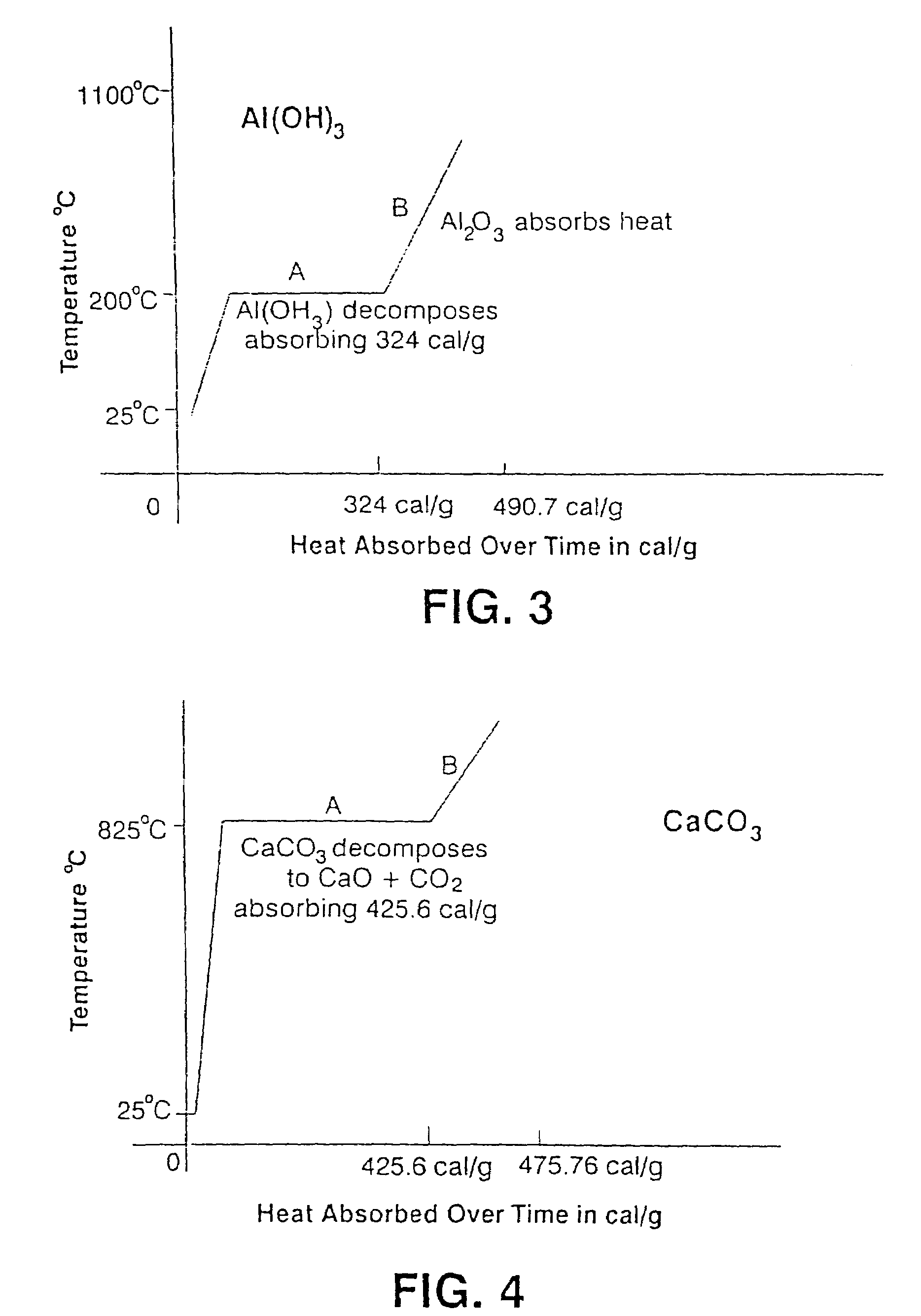Often,
active cooling of such electronic components, particularly delicate TR modules, Impatt diodes, data recorders, containers for chemicals and munitions, batteries and the like, is not feasible; and even when it is feasible, it requires continuous
high energy cooling, which taxes other ancillary
engineering systems typical in missiles, aircrafts, railroads, trucks, automobiles, guns,
nuclear reactor systems, related combat systems, as well as commercial systems and technology.
However, these conventional PCMs have proven to suffer from many technical problems, as well as problems in their use and application.
These problems include relatively low latent heats of fusion, the inability to control the shape and form of such fluid PCM materials, as well as the unevenness of heating and cooling.
Other problems include the need to provide a containment housing and the stress placed on the housing, resulting in frequent rupture and
spillage of the PCM; the
hazard to life and property due to PCMs'
high heat content and flammability; and lastly, the uneven cooling
hysteresis.
In addition, the known PCMs can spill hot fluids onto a human's
skin, resulting in serious third degree burns due to the sticky contact nature of many hot
wax and
polymer or plastic
phase change materials (PCMs) and the
high heat and sticky adherence to the
skin.
Ruptured non-Composite Fabric Endothermic Material (CFEM) or liquified bulk PCM disks spill their content and cause flash fires, which spread as the PCM pours out during heating in ovens and
wax-filled disks are prone to fires, which can spread and flow out of stoves.
However, the active agents suggested in Applicant's U.S. patent application Ser. No. 08 / 811,106, now U.S. Pat. No. 5,709,914 are not useful in the present inventive heat absorbing devices, as they are concomitantly both endotherms and exotherms. i.e. first, they absorb heat and then they give off heat to the item in connection with which they are being used, for the purpose of maintaining it warm.
While they can accomplish some protection from high temperatures through the physical phenomenon of the absorption of their
latent heat of fusion, wherein the appropriate crystalline substance absorbs a quantity of heat to melt without a temperature rise to its surroundings, they are totally unsuitable for applications relating to the absolute protection of heat sensitive devices from
high heat.
Another problem with the active agents of Applicant's, U.S. patent application Ser. No. 08 / 811,106, now U.S. Pat. No. 5,709,914 and the prior art PCMs is that they are not capable of absorbing more than 200 cal / gm.
Thus, they can remove heat for only a short period of time relative to
mass and only at temperatures not exceeding 326° F. Consequently, they are not effective for applications requiring cooling at very high temperatures and for long periods of time as would be needed, for example, in
airplane and railroad
crash recorders,
missile electronics,
spacecraft devices, power supplies, data recorders employed as aircraft and railroad components and combat devices, and in commercial uses such as oven sensors, fire walls, nuclear reactors, munitions' boxes, chemical containers, batteries and automobile exhaust systems.
Finally, these
latent heat of fusion agents (PCMs) tend to burn at relatively high temperatures raising the overall heat content of the
system.
In addition, the reversibility of the phenomena virtually guarantees that these agents will also transfer heat into the heat sensitive devices once said devices are at a lower temperature than the respective temperatures of the agents.
Consequently, not only do these agents operate as heat absorbing agents, but in closed environments they also operate as
heat transfer agents to cause the very damage to the heat sensitive devices that these agents were intended to protect in the first place.
 Login to View More
Login to View More  Login to View More
Login to View More 


